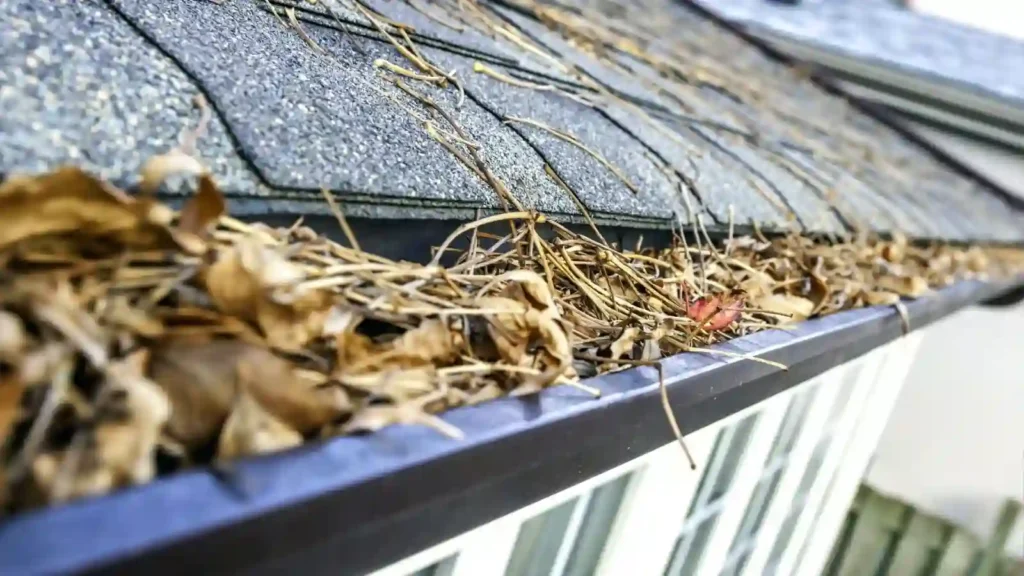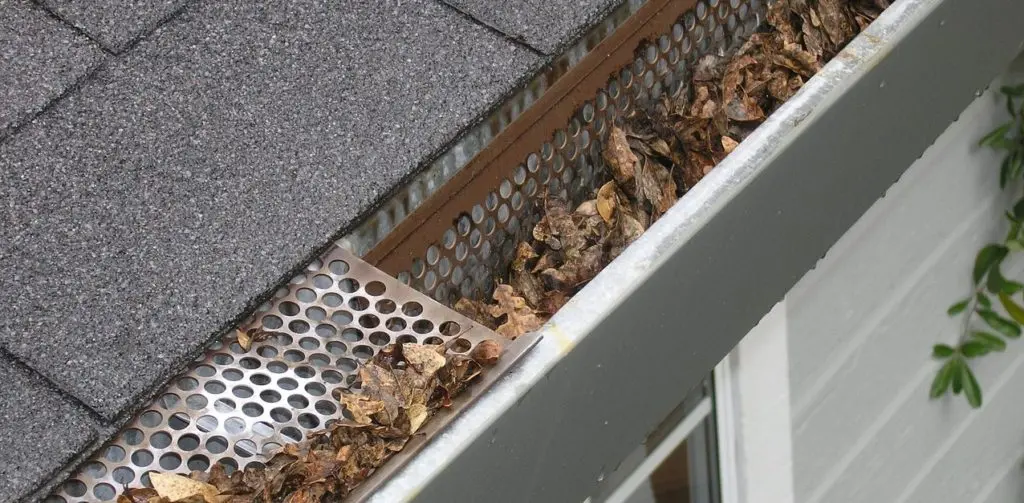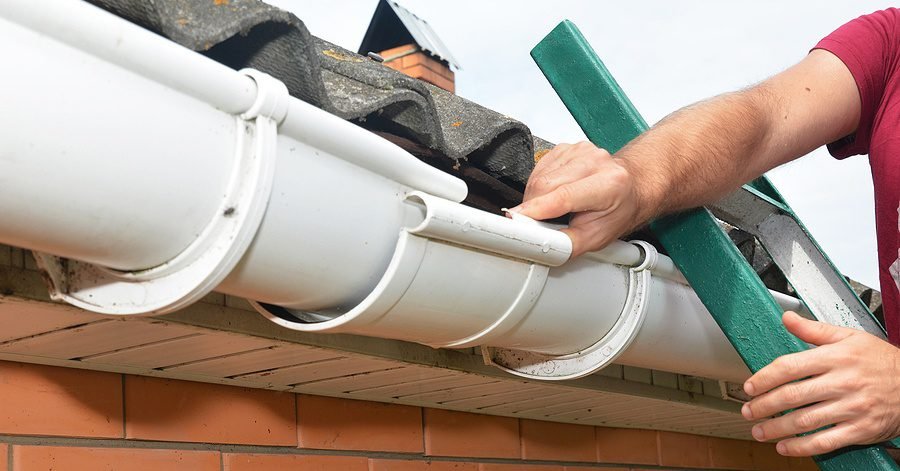Keeping an eye on your gutters is crucial for maintaining your home’s overall health. You might not think about them often, but gutters play a key role in directing water away from your house, preventing damage to your foundation, walls, and roof. So, how do you know when they need some TLC? Look out for telltale signs like sagging gutters, water damage on your siding, pooling water around the foundation, or even small plants growing in them. Noticing these red flags early can save you from bigger headaches and costly repairs down the line. Let’s dive into the specifics with Humberto Maradiaga!
Sagging Gutters:
Sagging gutters are a clear sign that your gutters need repair. If you notice your gutters drooping or pulling away from your house, it’s time to take action. This usually happens because the gutters are clogged with debris, making them heavy and causing them to sag. Over time, the fasteners that secure the gutters can loosen, making the problem worse. Sagging gutters can’t do their job of directing water away from your home, which can lead to water damage to your roof, walls, and foundation. So, if your gutters look like they’re on their last legs, it’s time to give them some much-needed attention!
Water Damage:
Water damage on your home’s exterior is a major red flag that your gutters need some love. If you spot water stains or damage on your siding or fascia boards, it means your gutters aren’t doing their job of channeling water away from your house. This can happen if the gutters are clogged, misaligned, or even cracked. Over time, this water damage can lead to rot, mold, and structural issues, which are costly to repair. So, if you notice any discoloration or signs of water damage, it’s a good idea to check your gutters and fix any problems before they escalate.

Pooling Water:
Pooling water around your home’s foundation is a definite sign that your gutters aren’t working properly. When gutters are clogged or misaligned, they can’t effectively channel rainwater away from your house. This causes water to overflow and accumulate around the base of your home, which can lead to serious issues like foundation cracks, basement flooding, and soil erosion. If you notice puddles or constantly wet ground near your foundation after it rains, it’s time to inspect your gutters. Fixing this issue promptly can save you from expensive repairs and help keep your home safe and dry.
Gutter Cracks or Splits:
- Small Cracks Lead to Big Problems: Even tiny cracks can expand over time, leading to significant water damage.
- Leaks: Cracks and splits cause water to leak out before it reaches the downspouts.
- Foundation Damage: Leaking water can seep into the foundation, causing cracks and structural issues.
- Interior Damage: Persistent leaks can eventually make their way into your home, damaging walls and ceilings.
- Ice Dams: In colder climates, water in the cracks can freeze and expand, making the damage worse.
- Immediate Repair Needed: Prompt attention to cracks can prevent more extensive and costly repairs.
Peeling Paint:
Noticing peeling paint around your gutters or on the sides of your house? That’s a clear sign your gutters might be in trouble. When gutters overflow or leak, water runs down your walls instead of being directed away, causing the paint to bubble, peel, and eventually flake off. This not only looks unsightly but also exposes the underlying wood to moisture, leading to rot and further damage. Peeling paint is like your home’s way of waving a red flag. Addressing gutter issues early can prevent this kind of damage and keep your home looking great and well-protected.

Rust:
Spotting rust on your gutters is a sure sign they need some attention. Rust forms when water sits in the gutters too long, usually because of clogs or improper drainage. This corrosion weakens the metal, leading to holes and leaks that can cause water to spill onto your home’s exterior. If left unchecked, rust can eat through the gutters, making them ineffective at protecting your house from water damage. So, if you see rust spots or flakes, it’s time to inspect your gutters closely and consider repairs or replacements to keep your home safe and sound.
Clogged Gutters:
- Overflow: Water spills over the sides instead of being directed away.
- Water Damage: Overflowing water can damage siding, fascia, and foundation.
- Weight Strain: Debris adds weight, causing gutters to sag or detach.
- Pests: Standing water attracts insects, birds, and rodents.
- Ice Dams: In cold weather, clogged gutters can lead to ice buildup, increasing roof damage risk.
- Mold Growth: Stagnant water promotes mold and mildew.
- Plant Growth: Debris accumulation can cause unwanted plant growth.
- Roof Leaks: Water backing up into the roof can cause leaks.
- Regular Maintenance: Frequent clogs indicate a need for better gutter maintenance.
- Repair Costs: Neglecting clogs can lead to expensive repairs.
Eroding Landscaping:
If your beautiful landscaping is starting to look more like a mess of eroded soil and washed-out mulch, your gutters might be to blame. When gutters are clogged or not functioning properly, they can’t channel water away from your home effectively. Instead, rainwater gushes over the sides, pounding the ground below and washing away soil, plants, and mulch. This not only ruins your garden’s appearance but can also damage plant roots and disrupt the overall health of your yard. If you’re seeing signs of erosion around your home, it’s time to check those gutters and get them back in shape!

Basement Flooding:
Basement flooding is a serious indication that your gutters are failing to do their job. When gutters are clogged, damaged, or improperly installed, rainwater can overflow and pool around the foundation of your home. This excess water can seep into cracks in the foundation walls or accumulate in the soil around your basement, eventually finding its way inside. Basement flooding not only causes significant property damage but also creates a breeding ground for mold and mildew, posing health risks to your family. To prevent basement flooding, it’s crucial to ensure your gutters are clean, properly maintained, and directing water away from your home effectively.
FAQ’s:
How do I know when my gutters need to be replaced?
You should consider replacing your gutters if they have extensive rust, severe sagging, or frequent leaks that repair won’t fix.
How do you check for gutter leaks?
To check for gutter leaks, run water through the gutters with a hose and inspect for any water dripping or spraying from seams, joints, or holes.
How long do gutters usually last?
Gutters typically last around 20 to 30 years with proper maintenance and care.
Can leaky gutters be repaired?
Yes, leaky gutters can often be repaired by sealing cracks or holes with gutter sealant or patches.
Is replacing gutters hard?
Replacing gutters can be a challenging task that requires proper tools and skills, but it’s manageable with some DIY experience or by hiring professionals.
CONCLUSION:
In conclusion, keeping an eye on your gutters is crucial for maintaining your home’s integrity. Look out for signs such as sagging gutters, water damage on siding, pooling water near the foundation, gutter cracks or splits, peeling paint on the exterior, rust spots, frequent clogs, eroding landscaping, basement flooding, and even plant growth in gutters. Addressing these issues promptly through repairs or replacement can prevent more extensive damage to your home’s structure and save you from costly repairs down the line. Regular maintenance and timely repairs ensure that your gutters continue to protect your home effectively.
